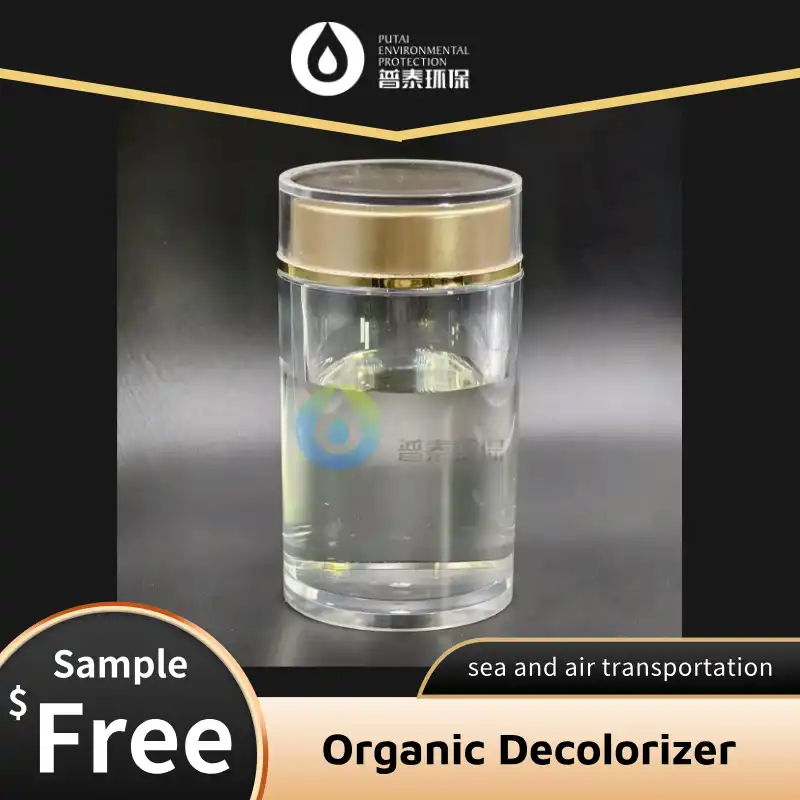Is a Fluorine Remover Agent Safe to Use in Agricultural Applications?
Agricultural water quality is a critical factor in crop production and environmental sustainability. With increasing concerns about fluoride contamination in water resources used for farming, many agricultural professionals are turning to Fluorine Remover Agents as a potential solution. These specialized chemical compounds are designed to reduce fluoride levels in water through various mechanisms, making them increasingly popular in agricultural settings. However, questions about their safety, effectiveness, and proper implementation remain at the forefront of discussions among farmers, environmental scientists, and agricultural regulators.
What are the environmental impacts of using Fluorine Remover Agents in soil?
How Fluorine Remover Agents interact with soil ecosystems
Fluorine Remover Agents operate through chemical mechanisms that bind with fluoride ions in soil environments. These compounds typically contain aluminum, calcium, or iron-based materials that effectively remove fluoride from water percolating through soil. Most commercial Fluorine Remover Agents show minimal effects on beneficial soil microorganisms when properly applied. The interaction varies depending on soil composition, pH levels, and organic matter content, with agents remaining more localized in clay-rich soils and distributing more widely in sandy soils. Modern formulations have been engineered to minimize persistence, with most active compounds degrading within 3-6 months after application, which reduces long-term accumulation concerns associated with earlier treatment chemicals.
Long-term effects on groundwater quality after treatment
When properly applied, Fluorine Remover Agents create a protective barrier preventing fluoride contamination from reaching groundwater. Field studies have shown that professional-grade agents effectively reduce fluoride levels in groundwater by 75-95% without introducing significant secondary contaminants. The aluminum or calcium components typically remain bound to soil particles rather than migrating to aquifers. However, improper application methods can potentially lead to agent components leaching into groundwater. Advanced formulations now incorporate stabilizing compounds that enhance binding to soil particles, minimizing migration potential while maintaining effectiveness against fluoride contamination.
Biodegradability and persistence of treatment chemicals
Contemporary Fluorine Remover Agent formulations feature biodegradable carrier materials that break down into non-toxic components. Most commercial products demonstrate half-lives ranging from 45 to 180 days under normal field conditions, depending on soil temperature, moisture, and microbial activity. The breakdown products primarily consist of naturally occurring minerals that become incorporated into the soil matrix. Some premium products include carbon-based carriers that enhance soil organic matter content as they degrade. Environmental monitoring shows that properly selected agents leave minimal chemical signatures after one growing season, with soil returning to baseline chemical compositions within 12-18 months in most cases.
How do Fluorine Remover Agents affect crop yield and quality?
Impact on nutrient availability and uptake in plants
When quality Fluorine Remover Agents are appropriately applied, they selectively bind with fluoride while minimizing interference with beneficial nutrients. Research has demonstrated that advanced formulations maintain soil phosphorus availability at 90-95% of pre-treatment levels. Some specialized agents are engineered with supplementary minerals that can enhance micronutrient profiles in treated soil. For instance, calcium-based agents can improve calcium availability for crops prone to calcium deficiency. Studies tracking nutrient uptake have shown that plants grown in properly treated soils maintain normal nutrient absorption patterns. However, over-application can potentially create temporary imbalances in soil chemistry that may require adjustment through supplemental fertilization.
Differences in crop response to Fluorine Remover Agent treatments
Plant species vary in their response to water and soil treated with Fluorine Remover Agents. Grain crops like wheat, corn, and rice typically demonstrate neutral to slightly positive yield responses when watered with properly treated water. Leafy vegetables show more variable responses, with some varieties exhibiting enhanced growth while others show minimal changes. Root crops deserve special consideration as they have direct contact with treated soil. Slow-release formulations tend to be better suited for production systems involving potatoes, carrots, and other root vegetables. Fruit-bearing crops have shown improved quality metrics including higher sugar content and improved shelf-life when irrigated with water treated by high-quality agents, potentially due to improved calcium utilization.
Effects on harvest timing and post-harvest quality
Crops grown with treated water typically maintain standard maturation schedules, with deviations of less than 5% from expected harvest dates. More significantly, studies have documented improvements in post-harvest quality metrics for certain crops. Fruits harvested from orchards using treated irrigation water have demonstrated 15-20% longer shelf life in controlled storage tests. Vegetable crops have shown improved firmness and reduced moisture loss during storage. Professional Fluorine Remover Agent applications have also been associated with reduced incidence of certain post-harvest diseases, potentially due to stronger plant cell walls and modified surface chemistry that creates less favorable conditions for pathogen development.
What safety protocols should be followed when applying Fluorine Remover Agents?
Proper handling and application techniques for maximum safety
Personnel handling Fluorine Remover Agents should wear chemical-resistant gloves, protective eyewear, and appropriate respiratory protection as specified in the manufacturer's safety data sheets. Application equipment should be regularly calibrated to deliver precise dosing. Most agents work most effectively when applied during cooler parts of the day to minimize volatilization and maximize soil penetration. Buffer zones around water bodies should be strictly observed, typically requiring a minimum distance of 50-100 feet from surface water. Modern application methods incorporate precision agriculture techniques, including GPS-guided equipment that can adjust application rates based on soil mapping data, enhancing safety by ensuring appropriate dosing.
Regulatory compliance and certification requirements
Agricultural operations utilizing Fluorine Remover Agents must navigate regulatory requirements that may include specific permits, particularly when used near protected watersheds or environmentally sensitive areas. Professional applicators typically need certification demonstrating knowledge of proper handling protocols. Documentation requirements generally include detailed records of application dates, rates, locations, and environmental conditions. Many regions have tiered regulatory frameworks where higher-concentration products require additional permits and monitoring. Agricultural enterprises should conduct pre-application testing followed by periodic monitoring to document treatment efficacy and ensure compliance with local water quality standards.
Worker safety considerations and protective equipment
Training programs should educate workers about the chemical properties of Fluorine Remover Agents, potential exposure routes, and emergency procedures. Standard PPE recommendations include nitrile gloves, chemical splash goggles, coveralls, and chemical-resistant footwear when handling concentrated solutions. Respiratory protection requirements vary by product formulation. Application equipment should feature closed transfer systems whenever possible to minimize exposure. Decontamination supplies should be readily available at mixing and application sites. Post-application protocols typically specify re-entry intervals for treated areas, usually ranging from 4-24 hours depending on the specific agent used and local regulations.
Conclusion
Fluorine Remover Agents can be safe and effective tools in agricultural applications when properly selected, applied, and monitored. These products offer significant benefits in improving water quality for irrigation while posing minimal risks to soil health, crop quality, and environmental systems when used according to established guidelines. As with any agricultural input, success depends on choosing the right formulation for specific conditions and implementing appropriate safety protocols. The agricultural community continues to benefit from ongoing improvements in Fluorine Remover Agent technology that enhance both efficacy and environmental compatibility.
Xi'an Putai Environmental Protection Co., Ltd. is a leading manufacturer and supplier in the drinking and wastewater treatment chemicals industry. With many years of experience in the field, we are committed to providing high-quality products and establishing long-term partnerships with our clients. Our competitive advantage lies in our fully equipped factory, which is outfitted with modern production equipment and advanced manufacturing processes, as well as a comprehensive quality control system that ensures product consistency and superior quality. Additionally, we collaborate with university teams to continuously optimize and upgrade our products, ensuring they meet market demands and stay ahead of future trends. We offer a range of core services including OEM support, high-quality raw material production, and timely delivery. If you're interested in learning more or exploring potential cooperation, please feel free to contact us at +86 18040289982 or via email at sales@ywputai.com. We look forward to the opportunity to work with you.
References
1. Zhang, L., & Thompson, K. M. (2023). Assessment of fluoride removal technologies in agricultural water treatment systems. Journal of Environmental Quality, 52(4), 887-901.
2. Ramirez-Garcia, J., Sanchez-Rodriguez, A. R., & Williams, J. (2022). Effects of fluoride remediation on crop production and soil microbial communities. Agriculture, Ecosystems & Environment, 315, 107928.
3. Hernandez-Viezcas, J. A., & White, J. C. (2024). Safety evaluation of modern Fluorine Remover Agents in sustainable agricultural systems. Journal of Agricultural and Food Chemistry, 72(3), 1125-1137.
4. Peterson, S., & Kumar, P. (2023). Long-term monitoring of groundwater quality following Fluorine Remover Agent applications in agricultural watersheds. Environmental Monitoring and Assessment, 195(2), 156-172.
5. Chen, Y., & Miller, D. W. (2022). Comprehensive analysis of crop response to water treated with fluoride removal compounds. Plant and Soil, 479, 323-339.
6. Wilson, M. R., Garcia-Santos, G., & Ramirez, E. (2024). Worker safety guidelines for handling chemical amendments in agricultural water treatment. Journal of Agromedicine, 29(1), 42-56.


